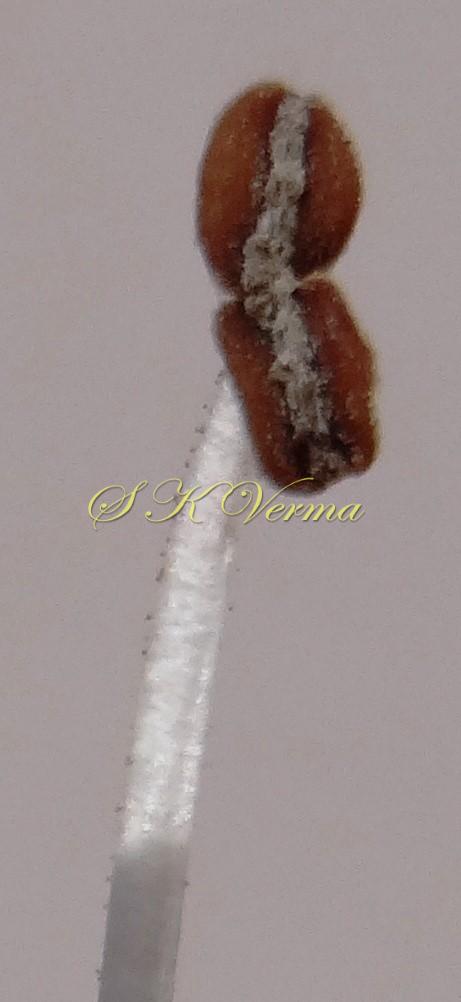PAULOWNIA
Paulownia
Siebold & Zuccarini, Fl. Jap. 1: 25. 1835; Fl. China @ eFloras.org 18: 8; Freeman et al., Fl. North Amer. @ eFloras.org 17: 453.
Trees, deciduous. Bark smooth with conspicuous lenticels when young. Branches opposite. Leaves opposite occasionally 3 in a whorl; petiole long; leaf blade entire or shallowly 3-5- lobed, margin undulate and often serrate when young. Inflorescence a large pyramidal to cylindrical terminal thyrses of 1-8-flowered cymes; pedunculate or not; bracts and bracteoles absent. Flowers bisexual, zygomorphic, hypogynous, pedicellate. Calyx campanulate or obconical, hairy, lobes 5, subequal, upper 1 enlarged. Corolla purple or white, funnelform; tube base constricted and slightly curved; limb 2-lipped; lower lip elongated and 3-lobed, whitish or yellowish internally on palate and lined with purple nectar guides; upper lip whitish, 2-lobed. Stamens 4, didynamous; filaments included; twisted near base; anthers divergent. Carpels 2, syncarpous; ovary superior, 2-locular, many ovules, placentation axile; style 1, nearly as long as stamens; stigma capitate. Capsule loculicidal, 2-valved or incompletely 4-valved; pericarp thin or thick and woody. Seeds small, numerous, membranous winged; endosperm sparse.
7 species
Paulownia tomentosa
Paulownia tomentosa
(Thunb.) Steud., Nomencl. Bot., ed. 2, 2: 278. 1841; Fl. China @ eFloras.org 18: 9; Freeman, Fl. North Amer. @ eFloras.org 17: 454; Bignonia tomentosa Thunb., Nova Acta Soc. Sci. Upsal. 4: 39.1783; in J. A. Murray, Syst. Veg. ed. 24: 563. 1784.
Large deciduous tree, 10-20 m tall, with broad umbrella-shaped crown. Bark brown-grey. Branches opposite, conspicuously lenticellate, lenticels pale and longitudinally elongated. Leaves opposite, exstipulate; petioles 7-35 cm long, pubescent; blade 16-30 cm x 14-30 cm, palmatinerved, broadly ovate or cordate, margin entire or shallowly 3-5-lobed, in young leaves margin undulate and often serrate, apex acuminate, base cordate, adaxially green and softly pubescent, abaxially pale green and tomentose. Flowers produced before the leaves in early spring. Inflorescence cymose; thyrses ca. 30 cm long, pyramidal; verticillasters 6-10, axis glabrous or pubescent; peduncle ascending, as long as or longer than pedicels, glabrous or pubescent. Flowers bisexual, zygomorphic, pendent, fragrant; pedicels 8-15 mm long, articulate at apex with flower. Calyx 14-18 mm long, brownish lanate, leathery; tube 7-9 mm, lobes 5, 7-9 mm x 5-8 mm, margin entire, apex acute to obtuse, persistent. Corolla purplish-white, funnelform, 2-lipped, ca. 7.5 cm x 5.5 cm; tube ca. 5.5 cm long, downcurved, base narrow, gradually inflated upwards, externally glandular-pubescent, glabrous internally, palate in throat 2-ridged, ridges yellow, throat lined with reddish purple nectar guides; limb bilabiate, ca. 5.5 cm wide, the lower lip wider, 3-lobed, lobes projecting and spreading, upper lip 2-lobed, reflexed, lobes 1.7-2.0 cm long, shallow, broader than long, apex truncate or rounded, tomentose on both sides. Stamens 4, didynamous, up to 2.3 cm long, inserted at base of corolla tube, included; filaments 1.5-2 cm long, glandular-pubescent in upper part; anther thecae opposite, brownish, flattened, 2-2.5 mm, dehiscing across connective, glabrous. Carpels 2, syncarpous; ovary ca. 5 mm long, ovoid, glandular- pubescent distally, 2-locular, ovules many per loculus; style 2.5-3 cm, sparsely glandular-pubescent proximally; stigma simple. Capsules persistent, ovoid, beaked, 3-4.5 cm x ca. 2 cm, cartilaginous, viscid floccose distally; surrounded at base by campanulate, persistent calyx. Seeds many, 3-4 mm, fusiform, surrounded by wings with irregular margin, wings reticulate.
Common Names: Empress Tree, Princess Tree, Foxglove Tree
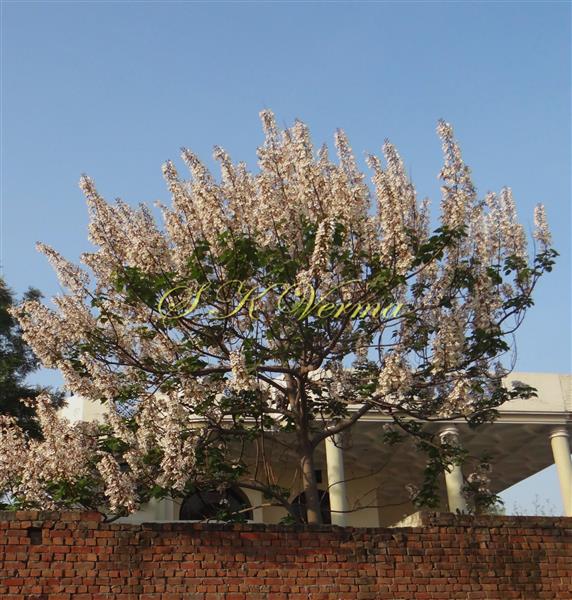
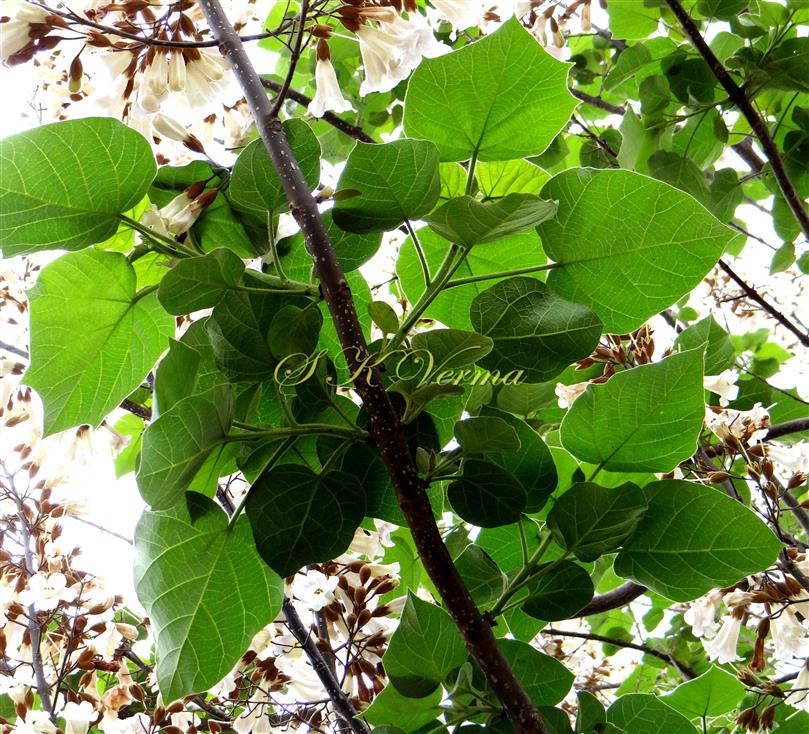
-DSC06031.jpg)
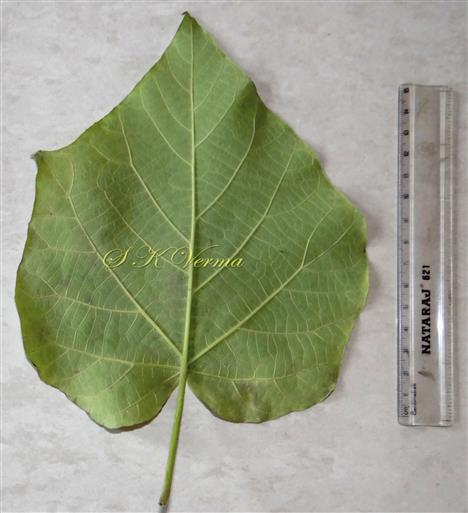
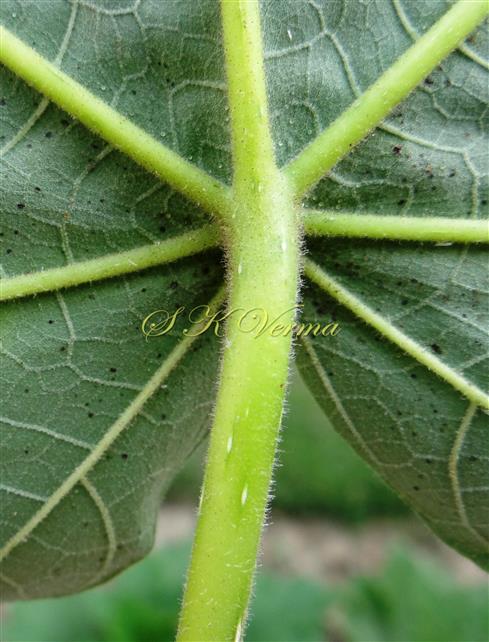
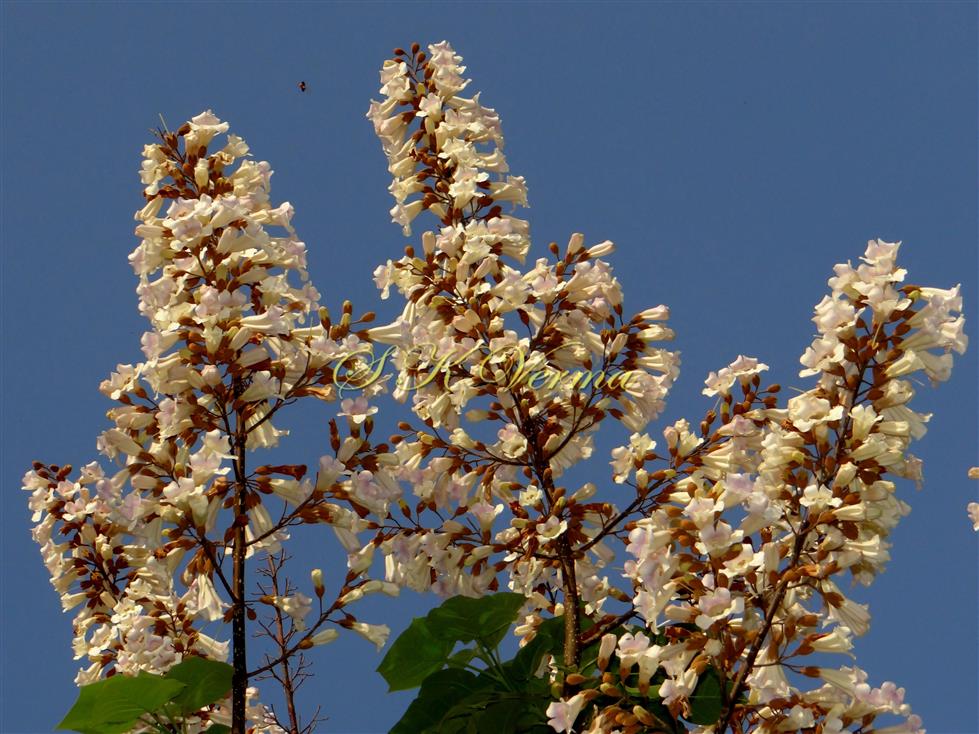
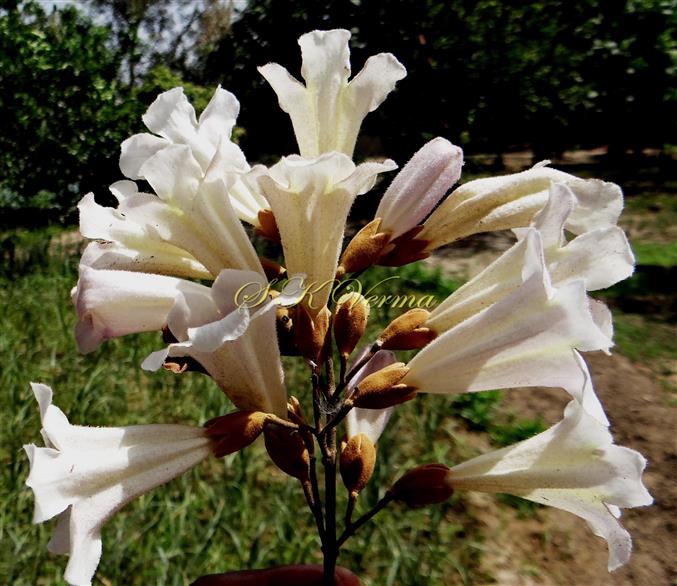
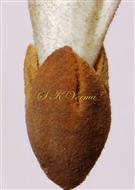
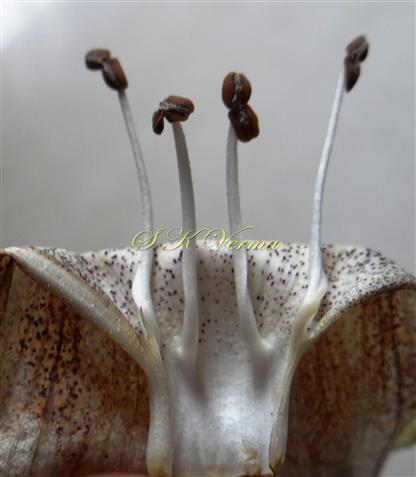


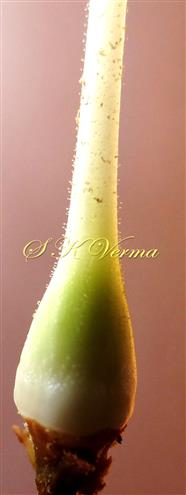
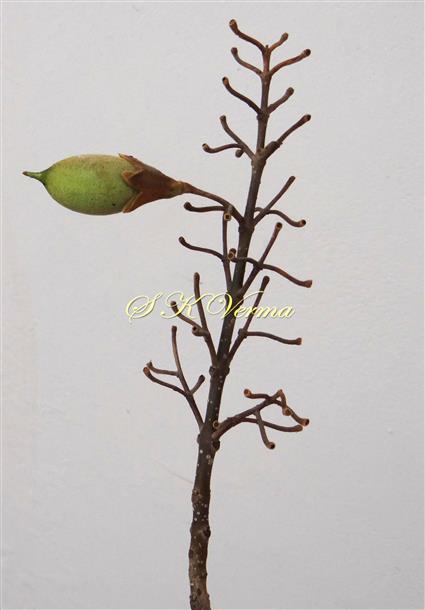
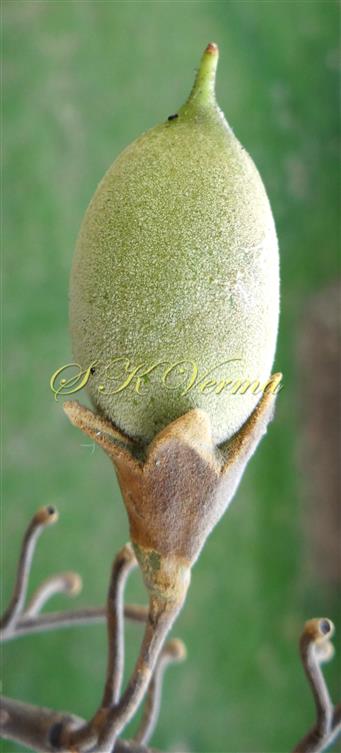
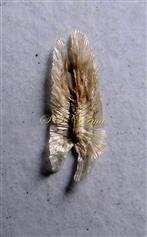



-DSC06031.jpg)






